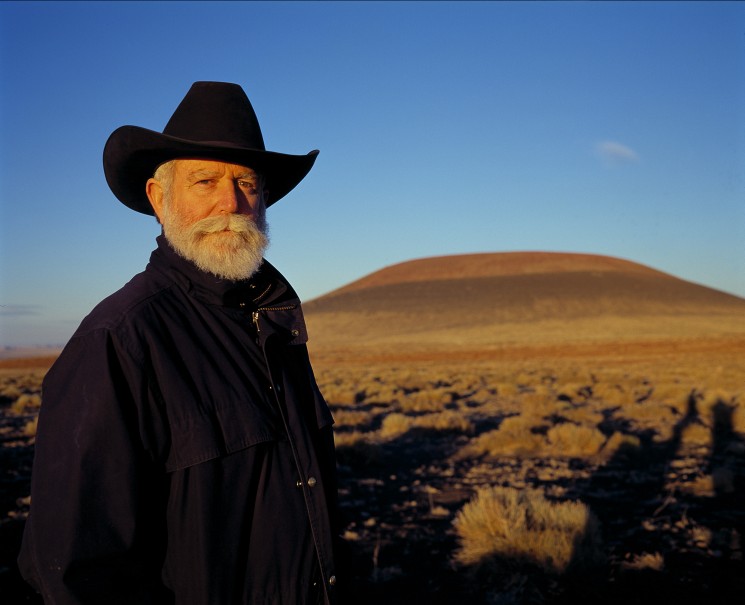
Dear Talkinggrid Friends,
Thank you LACMA! The James Turrell (b. May, 6th 1943) exhibition is a singular experience. It is eye opening, to the most extreme degree, to engage in a visual dialogue with silent and pure color. LIGHT, which re-frames and re-invigorates the interest in perception, is here the subject. Thereby, altering the expectation of “meaning,” to arrive as a gift from the outside. Instead, the gift is within, in the dazzling ability to perceive, to deduce, to share in Turrell’s focus on light as a truth to be embraced, cherished in a darkened chamber, for as long one can bare its enduring brilliance.
The invitation to reflect on seeing, and on its effect on knowing, is extended to the audience of the art inclined to admission into circle(s) of enlightenment, described and delineated by the artist’s scientific study and methodical exploration of light’s value. One must dart and dive into darkness, blackened rooms which beckon the viewer into sacred–––contemplative–––corners of neon, “Emergency Exits,” unreal Portals to raw Potential, and tangible understanding(s). Holograms gleam and blink inviting us to reach into two-dimensional space and pull out a jade triangle, or a square piece of blue opiate glass or the ellipse of the moon, a—shimmering—circle, cut deep in the projected phenomenon of fabricated and condescend time. One must think of Kazimir Malevich (23 February 1879—15 May 1935), the great pioneer of abstract art that broke the barrier into the world of Objective Art, replacing the Russian icon with the glow of pure form. Wandering from glowing pink room to dark wine sea of burnished light installed and projected via discrete sources and enticing one to walk into walls, blind…walls which become infinite halls, winding down the bunny-hole of masterful aesthetic manipulation.
California, home to the great film industry, and all things flashy and intoxicating, in their projected glamour is fertile ground for art, which takes light, seriously. Making it the STAR, rather than a tool of production. Turrell’s slicing and dicing of building(s) to create architecture in which viewing is the ONLY purpose, totally shifts the scale of typical visual art experience, which was traditionally, until Modernism, was limited to “the framed window,” of the painted surfaces (Yet… come to think of it, the red-wall mural paintings of Pompeii were… unframed, precedents… to the spectacle of the lighted Zimmer, living room feel, of Turrell’s LACMA installations remind one of other key moments in art history. The Impressionists, for example, showed off, a corner of their discoveries of light’s properties, and of color’s possibilities, when they incorporated tube paint into an outdoor light focused plein air technique of painting which used points, tiny chunks, dots, and/or strokes, of industrially produced, for the first time in history (!), color as a means of creating shifting, living, vibrant painted surfaces depicting slices of live in early 20th century France.
The interest in light is palpable in all successful works of visual art. The understanding of color, a function of light, is essential in most visual art practice. This Turrell exhibit provides a means of relating anew to the art of the Renaissance and its particular interest in light. The works of Carravagio and his followers, for example, dealt with the darkness abounding, shadowy figures of vagrant types he collected on streets, and cast in the role of saints and sinners in his highly emotional works. Masters such as Rembrandt van Rijn, (July 15, 1606-October 4th 1669, whose famous Chiaroscuro, was the signature understanding of light as a substance, precious, and essential in the construction of worldly value with dirt, crushed stones, and pigment. Similarly, Giovani Bellini, (c.1430 – 26 November 1516) also painted the features of light, in his painting of St. Francis, in (The Frick collection), soaking in the almighty sunlight, Bellini deftly recorded the brilliance of man’s expanding architectural prowess, thereby making a powerful record of light’s potential to speak volumes and thus influence everything from mood and radical changes perspective or epiphany.
Turrell has enjoyed a long career and a stunning success as an architect of landscapes, which seek to “Bring down the sky,” not by altering it but by changing the context in which it is seen. The artist’s crowning work, is the Roden Crater, in Arizona, pulls the sky from its far-away place and makes it a manageable square of pleasure. The retrospectives at LACMA, brings home the visual feast of the majestic desert light, which defines, the American West.
What a triumph for Los Angeles and the Art World that this retrospective of local-home-grown art, many of the early works created in Santa Monica California. This exhibition reveals that the actual subject of ALL visual art is, LIGHT, as is elegantly and effectively exhibited in the Eli Broad Center for Contemporary Art in the Los Angeles Contemporary Art Museum Compound. Right NOW!
LIGHT, as topic, as material, as the means by which we perceive and are perceived is treated with all the respect and majesty it deserves by temple building, monumental cavern digging, genius architect of trans-formative viewing spaces, Turrell.
Best regards,
Frau Kolb
*** Special thanks to Ms. Crane for her fresh and lively take on the Turrell Exhibiton. We don’t call YOU, “The MUSE,” for no thing. YOU ROCK!
Nov 3, 2013, 5:23 AM
[…] the joy. Follow up on the initial dive into “the ocean of air,” the sea of light which Turrell slices into edible portions of delight, left me full of ideas, ready to digest the delicious […]